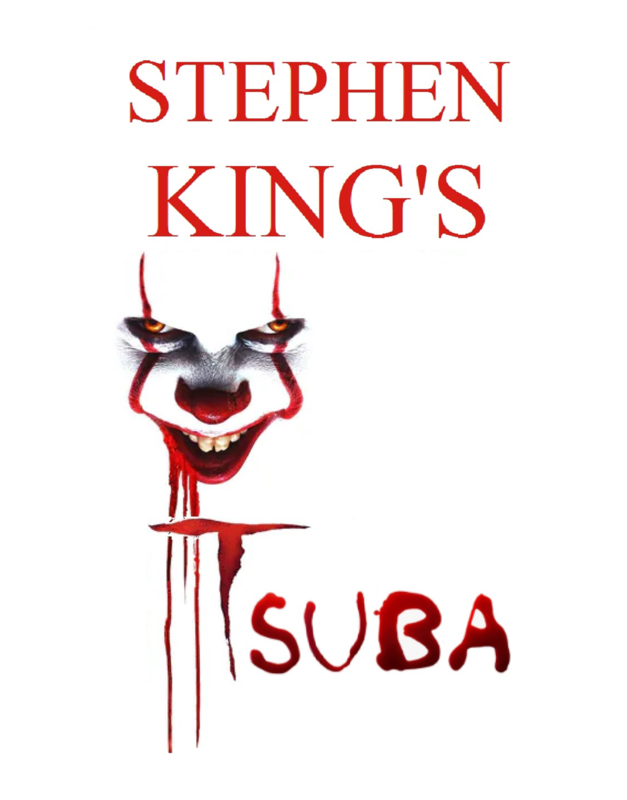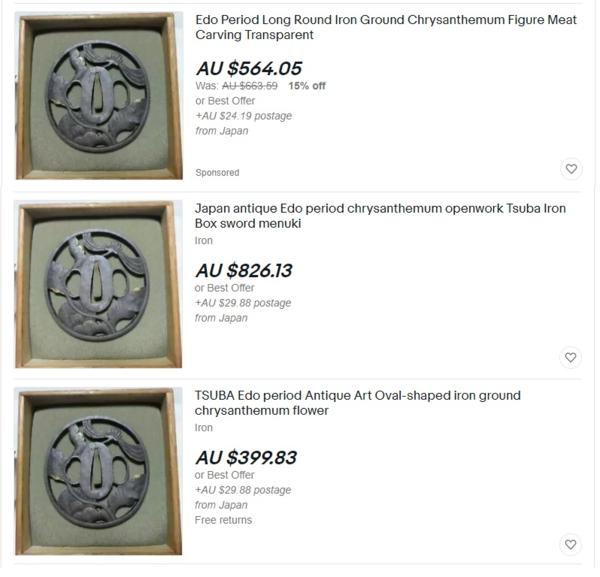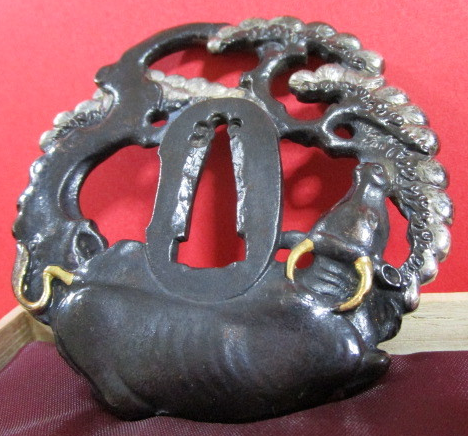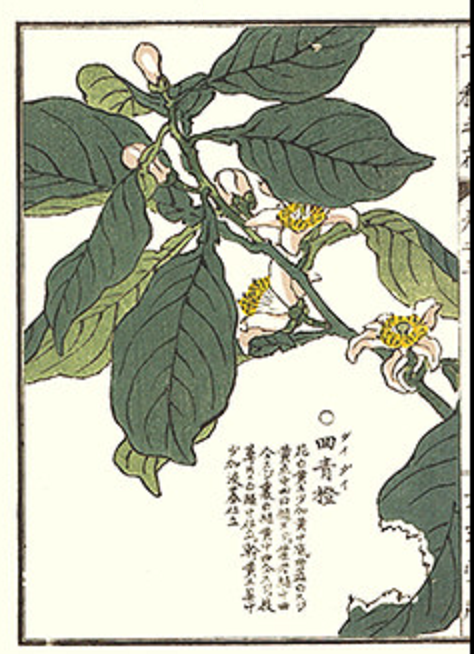-
Posts
3,706 -
Joined
-
Last visited
-
Days Won
100
Content Type
Profiles
Forums
Events
Store
Downloads
Gallery
Everything posted by Spartancrest
-
-
Wow that is beautiful!
-
I think it is made by the same people who make these modern 'replicas' https://www.jauce.com/user/dj2hmyuc you will notice the similarity of the raised rims. These are regularly released in various patterns harking back to very early designs.
-
You might find that the 'black' rust will protect the blade from destructive 'red' rust - that's one reason most tsuba are the colour they are. A black blade is better than no blade.
-
Thank you all, Pietro is not far off the mark - It cost me $75 AUD. Plus no shipping which is very unusual. It was bought on a Sunday from a little old lady in a country village, who was surprised anyone would pay so much for an old piece of metal - sounds like a fairytale For those who haven't seen this particular fairytale take a few minutes to read this wonderful nostalgic story. http://www.tsukamaki.net/PDF/gary_montgomery01.pdf
-
Paul Having it in hand it is easy to see the tool work around the seppa-dai and the weight and colour [something that often does not come across well in pictures] I have noticed in the past some people dismiss a lot of images as being castings, so it was more of a heads up that it isn't - don't worry seen many that are, even bought a few!
-
Sorry I meant to put the dimensions = 75mm x 70mm x 4.5mm There is some wear on the flower heads.
-
I spent the day going to a well known market here in Tassie - Evandale near Launceston - not much there really but just by chance I visited a little Antique shop in the town - and hit the Jackpot! I haven't found a tsuba in an actual Antique shop in nearly forty years, but today I found a genuine shakudo piece with gold chrysanthemums on both sides. Have a guess what I had to pay - [no it is not cast, don't even go there ]
-
Thanks Richard - I think we often forget that these pieces were owned over centuries and were sometimes modified for fashion or practicality. It is sometimes possible to gild the lily and make 'improvements'. [even though as Bob has pointed out the 'improvements' are beginning to fall out!]
-
I have two guards that I would like opinions about. The first is I 'think' Ko-Katchushi? with a Dote-mimi. The second I am wondering about the theme, is it dragon in clouds or dragon in water? I haven't seen this swirling background before.
-
-
There are many gourds grown in Japan - each has slightly different leaf patterns. This example is of a 'Bottle gourd'
-
One here with gold 'ume' https://www.japaneseswordbooksandtsuba.com/store/tsuba-%26-kodogu/h371-iron-tsuba-signed-umetada-holbrook#
-
Yes Curran, Gonse mentions the gold inlay - wish I could find a clear picture. Like everyone else, Gonse got some things wrong, Dragonflies don't fly at night [ Just the same as the opening scene in 'Men in Black' -WRONG ] For those unfamiliar with Gonse he was an early (Western) authority on Japanese art including Swords but mainly Tosogu - https://en.wikipedia.org/wiki/Louis_Gonse he wrote extensively [unfortunately for me at least - in French!] [The Countess Annie De Montaigu, took all her illustrations and information from Gonse] Sorry for drifting off topic
-
I don't have much in the way of information on the 'UME' other than a few roughly 130 year old images. Regardless of their age the two extracts from the accompanying texts speak with great regard to Umetada's works. Japanese ART by Louis Gonse translated from French by M. P. Nickerson. (1891) SWORD MOUNTINGS. The seventeenth century marks the apogee of iron work, as it marks also that of many other branches of art. The name of Umetada throws upon this period all the splendor of his genial talent. One must not confound this Umetada, who was from the province of Owari, with Umetada Miojiu, of Tamashiro, a maker of sword blades. Umetada the chaser signed his work with the plum flower (ume) and the character "tada." Of all metal work in Japan, his is most sought for. He was born in the latter part of the sixteenth century, and worked during the "nengo" of Kuanyei (1624-1643). Two most perfect examples of his style, celebrated throughout Japan, having the signature of this great artist, are now found in a Parisian collection. On one of these pieces dragon-flies, with the fierce look of creatures of the night, are engraved in low relief; they decorate the two sides, and extend upon the outside border, which is ornamented with a beautiful fret design. The plum-tree flower is inlaid with gold above the signature. On the other piece Umetada has expressed, with wonderful art, a sketch in the style of Yeyas. It represents a horse at liberty on the prairie, his mane flowing in the wind. The illusion of the painting is rendered by open work upon metal of varying thickness. Two qualities are found united in Umetada: finished skill in execution and originality of style. His works are so original that they are easily recognized among all others. His taste was for work of a quiet and manly character. He excelled in the chasing of iron without incrustations. He employed metal of extraordinary hardness. When one strikes one of Umetada's sword guards, holding it at the end of the finger, it sounds like a crystal bell. I will here remark that fine iron sword guards are distinguished by the purity of their sound. The more ancient a guard is, the more clear and high is its sound. This quality of sound results from the perfect state of homogeneity and density of the metal, resulting from continued hammering before the work of chasing began. THE SWORD OF Japan AND IT'S ORNAMENTS by THE COUNTESS ANNIE DE MONTAIGU Illustrations from notable examples of ancient sword-guards. Source: The Monthly Illustrator, Vol. 4, No. 13 (May, 1895). Outemada [Modern-Umetada] was also an able exponent of the school of metal-workers, and devoted his talents to the manufacture of tsuba; he was of a sombre turn of thought, and his works are characterized by their strange and grotesque forms, but are always notable in execution. Two pieces by this grandest artist of a past type celebrated in Japan, were found some time ago in a Parisian collection. One of these is ornamented with dragon-flies, in their wild, nocturnal aspect, hollowed out of the metal and curved over the border of the guard. In the other he represents, with remarkable art, a brush-like sketch; it is of a horse at liberty in the field, with his mane flying in the wind. All of his work is highly original, and as he employed the hardest metals they possess an almost everlasting durability.
-
Well I did tell Stephen awhile ago he could do with a bit of a wow factor for his book cover - how about this! [Small children don't make up a big market in tsuba collecting do they?]
-
Thanks David, I was just wondering if I quoted a certificate number as a reference to a particular type or design of guard, if that could be used as an example people could look up, but if there is no general access to images on the certificates then the certificate number would not be of much help. I will have to find other examples from museums where stored images can be found by the general public. - it was a good idea that didn't work out.
-
This is like watching a tennis game -
-
I was just wondering if anyone knows if there is register of NBTHK certificate numbers? Also are duplicate certificates kept as references by NBTHK? It would be a great resource for study if available.
-
I can't decide which group either of these guards would fit? I know Onin were known for large inlays of precast bronze/brass elements, but to my eyes these are borderline. Onin were thinner plate? But I don't have access to the thickness of either guard. Any good guesses? Thanks.
-
What is going on with ebay? This guard is listed three times and with three different prices - and it is not the only example. https://www.ebay.com.au/itm/324643235985 https://www.ebay.com.au/itm/324444689023 https://www.ebay.com.au/itm/133721764429
-
Great job - I love to re-use things that can be useful in new ways - we humans are often so wasteful of wonderful objects that just need a little thought to have a second life. Thinking inside the box [rather than outside for a change] top marks Grev.
-
I think this one needs a little sanding to get rid of the gloss finish! https://www.jauce.com/auction/x785779529 that poor Ox must have slid off the seppa-dai, he needs to be put down, I hate to see animals suffer.
-
Thank you Chris, I wish it was one of mine, I am doing a book on the Cleveland Museum of Art and using it to show how some of the designs were developed and more or less it is for beginners in the field. There is some detailed information but it doesn't target the experts [who really shouldn't need it after all !] I am sure when it is finished there will be criticism that I didn't mention this or that about the examples, what amuses me is that when someone does that - they don't need that information to start with do they? They already know it! I don't want to bombard people with page after page of detailed descriptions most of which can be directly seen in the images - nor do I personally like a heap of Japanese terms that must be explained into English anyway, why make a subject more difficult to start with? If it was going to be a technical book, that only 'experts' would appreciate I can't see much point to it. I will get off my soap box now. I do wish to thank you and the other members for all their help - now and in the past.
-
Great Piers - you don't happen to know of a woodblock print I can use for a visual comparison in my book? I am adding where possible images that coincide with the tsuba themes, just a bit extra detail other books don't include. I have this one, I will use if I can't find a better likeness. Hold on a moment What about this Bitter Orange? it has the standing buds as well - I am beginning to think it is a total guessing game, I could do with my late father's expertise on horticulture - unfortunately it's not something he passed on to me [ just a dicky heart a bad back and baldness] Thank you all for the help.











.thumb.jpg.048946bb05d4f0f03e6c5af969d4f13e.jpg)






